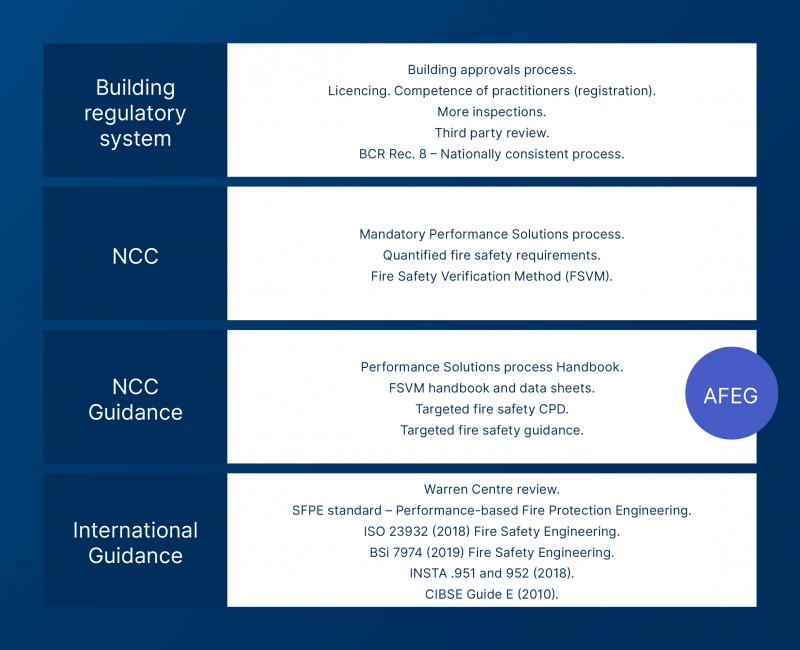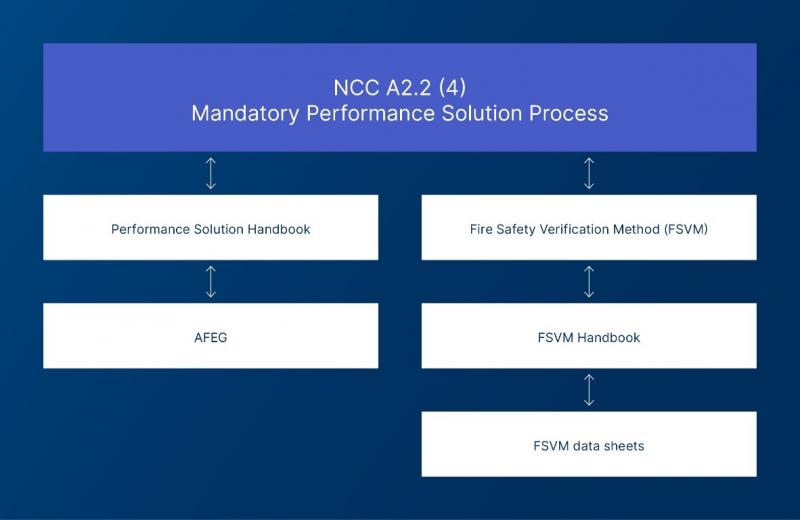Now that the Australian Building Codes Board (ABCB) has released the Australian Fire Engineering Guidelines (AFEG), you could be mistaken in thinking its IFEG rather than AFEG.
While both document acronyms sound quite similar, they are different documents. So… to clear up any confusion, here is some information about AFEG, the latest fire-related resource released by the ABCB.
About AFEG
AFEG was informed by the International Fire Engineering Guidelines (IFEG), which is now superseded, and provides contemporary information for the fire safety design of buildings under the National Construction Code (NCC).
The NCC has the fire safety goals of life safety, facilitation of fire brigade intervention and protection of other buildings from a fire in a building. The AFEG provides guidance for Fire Engineers to select an analysis and evaluation strategy appropriate to the project in hand.
Various industry associations throughout Australia have endorsed the AFEG. These include the Australian and New Zealand National Council for fire and emergency services (AFAC), Engineers Australia and the Institution of Fire Engineers. It is considered guidance material to the NCC along with other guidance material such as our handbooks.
The following diagram shows where AFEG sits in the building regulatory system.

Key fundamentals of AFEG
One of the key fundamentals of the AFEG is the Performance Based Design Brief (PBDB) process. A PBDB follows a process that defines the scope of work for the fire engineering analysis. The overall fire engineering process includes preparing a PBDB, carrying out the requisite analysis, collating the results and drawing conclusions. Its purpose is to set out the basis on which the fire safety analysis will be undertaken. This process aligns with the NCC process for developing performance solutions (outlined in A2.2(4)) and the requirements for documenting Performance Solutions.
Involving as many stakeholders as possible in developing the acceptance criteria for a fire safety design is key. The interpretation of the terms ‘to the degree necessary’ and ‘appropriate to’ for any factor related to fire safety Performance Requirements will vary according to the project being designed and subsequently analysed. This adds to the difficulty of setting the acceptance criteria. This issue can also be addressed using the PBDB process. The PBDB provides a consensus on the fire safety components of the designs anddesign options that need to be considered.
The diagram below shows where the AFEG sits in terms of the NCC and the other supporting documents regarding fire safety.

About IFEG
The IFEG was developed in 2005 as an International Guideline to meet the joint needs of Australia, Canada, United States of America and New Zealand. It references both nationally and internationally available standards, guides and associated documents, and use both imperial and SI units throughout. In consultation with the ABCB’s counterparts in Canada, the United States of America and New Zealand, it has been agreed that that IFEG no longer represents contemporary practice in each country. In Australia, the IFEG is now superseded by the AFEG.